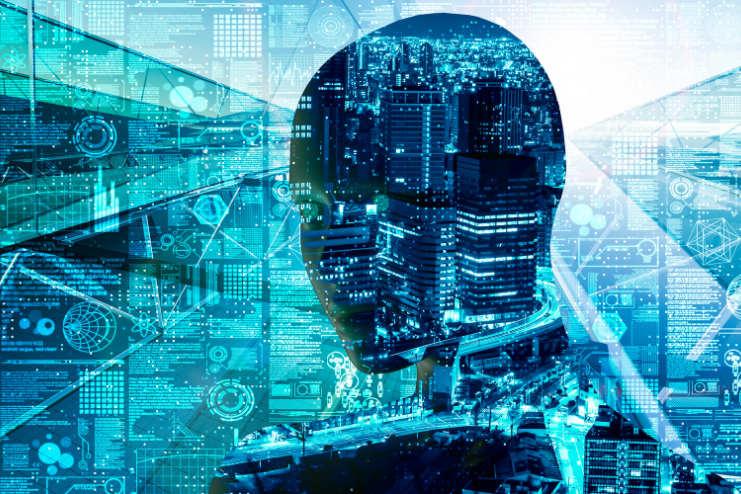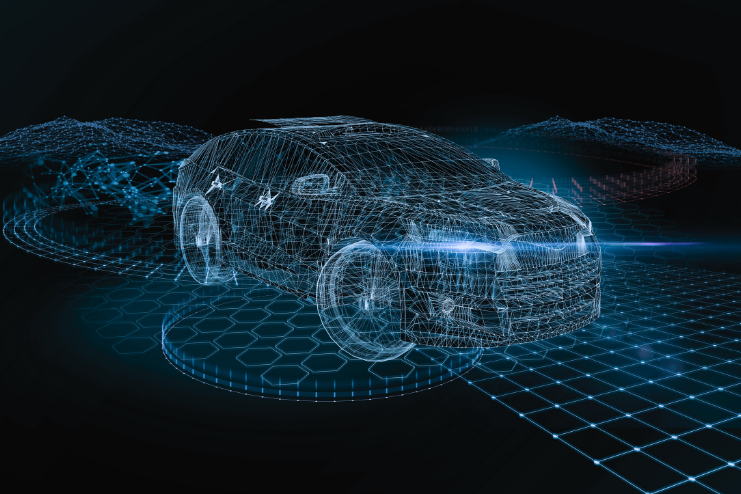Artificial Intelligence integration has infiltrated various aspects of our lives, from personalised recommendations on streaming platforms to predictive maintenance in manufacturing sectors. At the core of this AI revolution lies machine learning, a subset of AI that enables computers to learn from data rather than being explicitly programmed.
However, as the data landscape evolves, traditional machine learning approaches face limitations in adapting to new information and maintaining relevance over time. That’s where continuous learning steps in to help the AI systems stay sharp and relevant.
What does Continuous Learning in AI mean?
Just like humans are always learning new things to improve themselves, machines, especially AI-powered ones, are on a similar journey of constant growth and improvement. Continuous learning in AI is similar to the ongoing process of learning new things humans do throughout their lives. It’s about AI systems continually improving as they’re exposed to new information. Instead of sticking to what they’ve learned from old data, they adapt and improve as new data comes in. This is important for AI to stay effective, especially in a world where things are always changing.
Think of it like human learning through life experiences. As we encounter new situations, we learn from them and adjust our behaviour accordingly. Similarly, continuous learning for AI systems means they can update their understanding based on new data, which allows them to stay relevant and effective in dynamic environments.
In the context of machine learning, several key terms describe different approaches to how AI systems learn and adapt.
-
Continuous Learning: Continuous learning refers to the ongoing process where AI systems incrementally learn from new data over time without being explicitly reprogrammed. This helps them adapt to new patterns and information seamlessly, much like humans learning from daily experiences.
-
Continual Learning: Continual learning is the ability of an AI system to retain knowledge and skills over time while learning new information. This approach prevents the system from forgetting previously learned information, a phenomenon known as “catastrophic forgetting,” and ensures a cumulative knowledge base.
-
Lifelong Learning: Lifelong learning in AI is the sustained and progressive acquisition of knowledge and skills over an AI system’s entire lifespan. It emphasises long-term learning strategies that allow AI to accumulate knowledge incrementally and adapt over extended periods. In colloquial use, the terms Continuous, Continual, and Lifelong (or Life-long) Machine Learning are often interchangeable.
-
Incremental Learning: Incremental learning involves updating the AI model incrementally as new data becomes available. Unlike traditional batch learning, where the model is retrained from scratch with all available data, incremental learning updates the model gradually, enabling more efficient and timely learning processes.
-
Transfer Learning: Transfer learning leverages knowledge gained from solving one problem to help solve a different but related problem. In the context of AI, it means using a pre-trained model on a new task, which can significantly speed up the learning process and improve performance, especially when the new task has limited data available.
What is the difference between Traditional Machine Learning and Continuous Learning?
While both are important to the learning process, here are the differences between traditional machine learning and continuous learning:
|
|
|
|---|---|
|
Trained on a static dataset. |
The model continuously learns and adjusts to new data. |
|
The deployed model remains static and does not incorporate new data unless retrained. |
The model updates and refines its understanding as new data arrives, resulting in more accurate forecasting and decision-making. |
|
Not suitable for scenarios requiring adaption to dynamically changing data. |
Proves to be beneficial in environments with rapidly changing data patterns |
|
Suffers from model drift. |
Ensure the machine learning model remains relevant and maintains high performance.
|
Advantages of Continuous Learning
Continuous learning presents numerous benefits compared to traditional machine learning methods. Here, we highlight a few advantages of implementing continuous learning in your AI models:
Adaptability: Continuous learning enables models to evolve and adjust over time, making them well-suited for applications in dynamic and evolving environments.
Efficiency: Unlike the need for complete model retraining upon introducing new data for the same task, continuous learning allows for incremental updates. This conserves computational resources and reduces time requirements.
Knowledge Retention: Continuous learning enables models to retain knowledge acquired from past tasks and data. This capability is essential for long-term memory preservation in AI systems. However, models risk encountering Catastrophic Forgetting if new learning overrides previously acquired knowledge. Skillfully applied continuous learning indeed gives the practitioner the benefit of knowledge retention. However, when applied without adequate experience and deep understanding, continuous learning attempts often lead to Catastrophic Forgetting.
Simply put, catastrophic forgetting means that the network learns to perform well on the new data or tasks but can no longer perform well on some or all of the previous data or tasks. We discuss this in more detail below.
Reduced Data Storage: Methods like generative replay mean organisations no longer have to keep and manage huge amounts of old data. This makes it easier to use continuous learning in places with limited resources.
Versatility: Continuous learning can be applied across various domains, including natural language processing, computer vision, and recommendation systems, to name just a few.
How is Continuous Learning being used in today’s context?
Continuous learning finds applications across various domains where data streams are constantly evolving; let’s take a look at the following examples:

Enhancing Retail and E-commerce Personalisation
Continuous learning is widely employed by retailers to enhance the online shopping experience. As you browse products, the recommendations often seem to align perfectly with your preferences. This seamless personalisation is made possible by continuous learning algorithms. Retailers continuously analyse your behaviour, such as browsing history and purchase patterns, to refine their recommendation algorithms. The system learns and adapts with each interaction, ensuring that your shopping journey remains engaging and tailored to your tastes.

Financial Fraud Detection
In the financial sector, continuous learning is used for fraud detection and prevention. By continuously analysing transaction data and patterns in real-time, machine learning models can detect anomalous behaviour indicative of fraudulent activity, such as unusual spending patterns, identity theft, or account takeovers. Continuous learning allows fraud detection systems to adapt to evolving fraud tactics and stay ahead of emerging threats, minimising financial losses and maintaining trust in financial institutions.

Improving Manufacturing Line Clearance
Continuous learning can significantly improve manufacturing line clearance by detecting any leftover items that may contaminate or interfere with the production process, ensuring no sections are missed during inspection. With capabilities for real-time adjustments and rescans, manufacturers can adapt quickly to any changes and streamline line inspection while still maintaining high standards with continuous learning.
Are there limitations to continuous learning?
Despite efforts to address it, continuous learning models can still face the issue of catastrophic forgetting. This is when a model forgets what it learned previously when it’s taught new things, resulting in a decline in performance on past data or tasks as new ones are learned.
Some continuous learning methods may become too focused on old data, making it difficult for the model to adapt to new tasks or domains. Implementing continuous learning techniques can be complex and require careful tuning and design, potentially limiting their adoption in certain applications. Scalability can also prove to be a challenge, especially when the model is deployed at multiple sites unless appropriate measures are taken.
Future directions with continuous learning
The future of continuous learning models lies in addressing these challenges and exploring innovative techniques that enhance adaptability and efficiency. As research in this area continues to evolve, we can expect more sophisticated models capable of seamless real-time learning and adaptation.
Aicadium is at the forefront of this innovation. With a strong commitment to advancing AI technologies, Aicadium has developed cutting-edge solutions that embody continuous learning principles.
Introducing Aicadium View™ for Inspection
Aicadium View™ for Inspection is an AI-driven computer vision application that uses pre-trained models, continuous learning and unique proprietary techniques. Unlike traditional AI, which requires extensive data and fixed algorithms, Aicadium View™ requires less pre-work, provides easy model tracking, and allows real-time adjustments. This streamlined approach accelerates deployment and integration into existing processes, ensuring clients get results faster while reducing biases in conventional AI models.
Our team’s expertise and experience in continuous machine learning have uniquely positioned us to offer a complete end-to-end solution. Instead of traditional AI’s lengthy and costly manual video labelling and model training, Aicadium uses Foundation Models that have been trained and fine-tuned on diverse data sources. This approach reduces the time needed for labelling and model creation, resulting in a smaller, easy-to-deploy version of a complex model. Ultimately saving time while boosting efficiency.
The true innovation, however, is in our model’s ability to learn continuously – it evolves over time, effortlessly adapting to new data and experiences. This feature prevents model drift and ensures sustained accuracy. Our fully integrated data pipeline engineering encompasses everything from data extraction and foundation model fine-tuning to system deployment. Allowing the user to adapt in real-time, improve efficiency, and make confident decisions, effectively bridging the gap between data and deployment.
If you want to explore continuous learning AI for your organisation, contact us to learn more!






